Managing self care activities
A child, adult or older person who has difficulty with:
- Physical skills and/or
- Thinking skills and/or
- Bladder and bowel control
may have difficulty in one or more areas of self care.
Let’s meet some characters who have difficulties with self care.
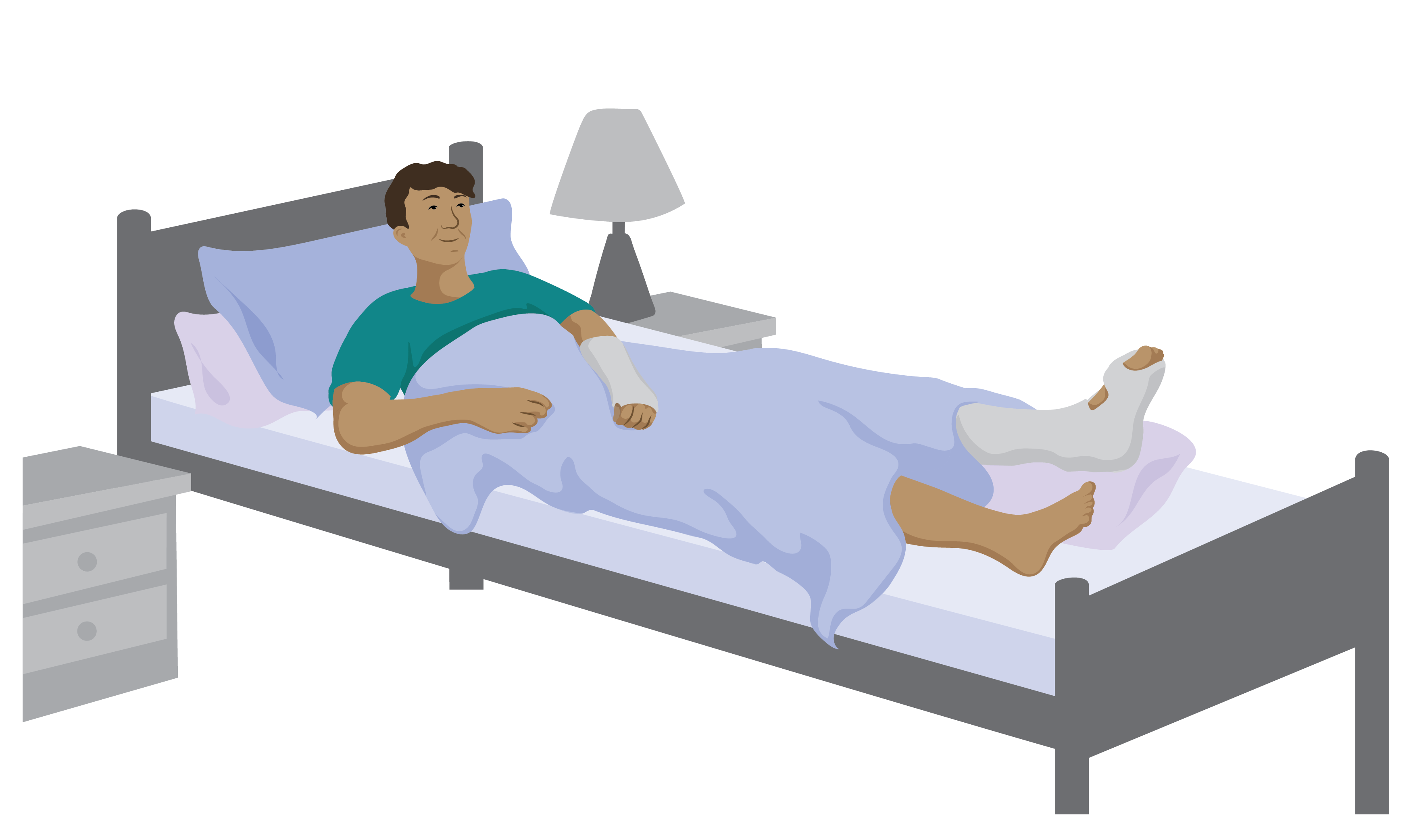
Meet Ronin
Ronin is a young man who recently had an accident.
He has broken his left arm and left leg. He cannot put weight through his leg or use his arm until the bones heal.
While his bones heal he needs help to get to the toilet, to shower and dress.
Question
Are Ronin’s difficulties with self care permanent or temporary?
Temporary, as he will be able to move freely again once his injuries heal.
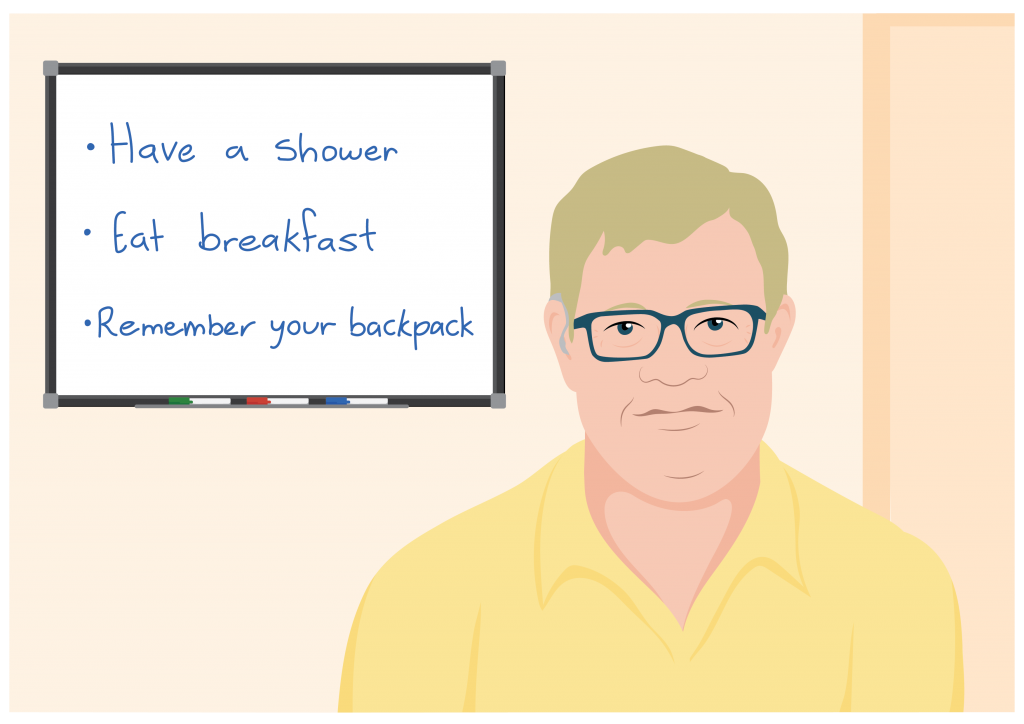
Meet Samuel
Samuel is a teenager who has Down syndrome. He finds it difficult to coordinate the movements of his fingers for tasks such as doing up buttons and tying his shoe laces. You will find out in the next lesson what self care assistive products Samuel uses to help him with these tasks.
Samuel also does not always remember to do his self care activities. He uses a whiteboard at home, and a mobile phone app to help him remember the things he needs to do.
Question
What does Samuel use a white board for?
Samuel uses a white board to help remember the self care activities he needs to do.

Meet Aida
Aida has had a stroke. This has caused weakness on the left side of her body.
She finds it hard to walk, balance and use her left arm. She uses a walking stick to move around.
Aida can feel when she needs to go to the toilet. However, she finds it hard to move to the toilet quickly enough. She needs help to sit down onto the toilet seat and stand up afterwards. She also finds showering and dressing hard. Her daughter helps her with most of her self care.
Question
Why does Aida find it hard to get to the toilet?
Aida finds it hard to get to the toilet because she finds it hard to walk. She has difficulty with her mobility.
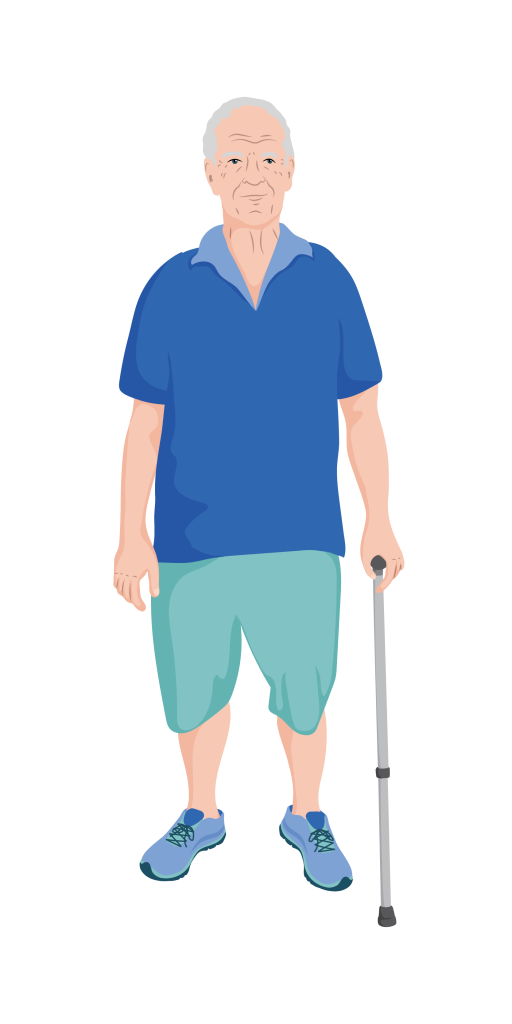
Remember Jensen?
Jensen is 60 years old and has diabetes. Jensen does not have full feeling in his feet and uses a walking stick.
He does not feel the body signals to go to the toilet and has started to experience leaks of urine and sometimes feels that his bowel has not completely emptied.
Jensen also finds zips and buttons difficult when dressing. Find out in the next lesson about self care assistive products which could help.
Question
Why is Jenson not able to successfully go to the toilet?
Jenson has difficulty feeling the body signals to go to the toilet. He also has difficulty fully emptying his bowels.
Problems with self care can create difficulties for people in lots of different ways.
Discussion
Discuss with colleagues or post on the discussion forum some of the ways that difficulty with self care can impact a person’s life.
Below are some of common impacts, however there are likely others including some particularly relevant to the people in your community.
Impacts of difficulty with self care:
- Some people feel shame because they need help
- It takes longer to get things done, for the person and for family members who help, so there is less time for other things
- Some people may experience shame and embarrassment when there are bowel or bladder accidents
- Some people end up being isolated or excluded. They are unable to participate in school, work, community life
- There is a cost for individuals and their families, because of the need to buy extra products, or loss of income through the person not being able to work or a family member needing to work less to support them.
Making self care as easy as possible is important for people’s quality of life.
Read on to see three main ways that self care can be made easier.
1. Use self care assistive products
Self care assistive products can make self care easier for the person, family members or caregivers.
You will learn about some different types of self care assistive products in the next lesson.
2. Adapt the environment
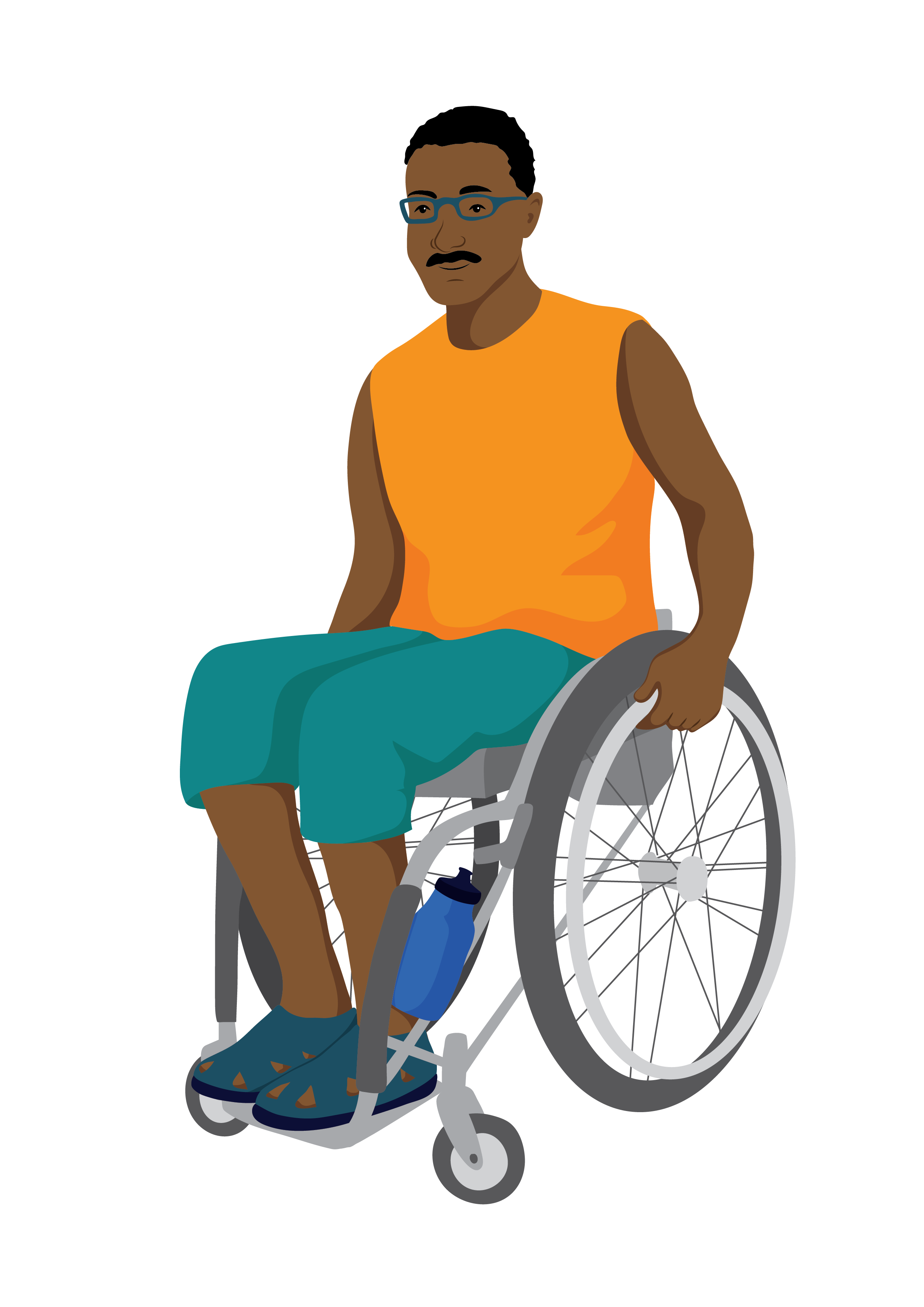
Remember Peter?
Peter has a spinal cord injury, and is paralysed (cannot move) below his waist. He has strong arms and good upper body balance. He can move around independently using his wheelchair.

Peter has a smooth path and a ramp into his bathroom so that he can use the bathroom independently.
The door is wide enough for his wheelchair to fit through, and there is enough space for him to turn around inside.
3. Change the way self care is done
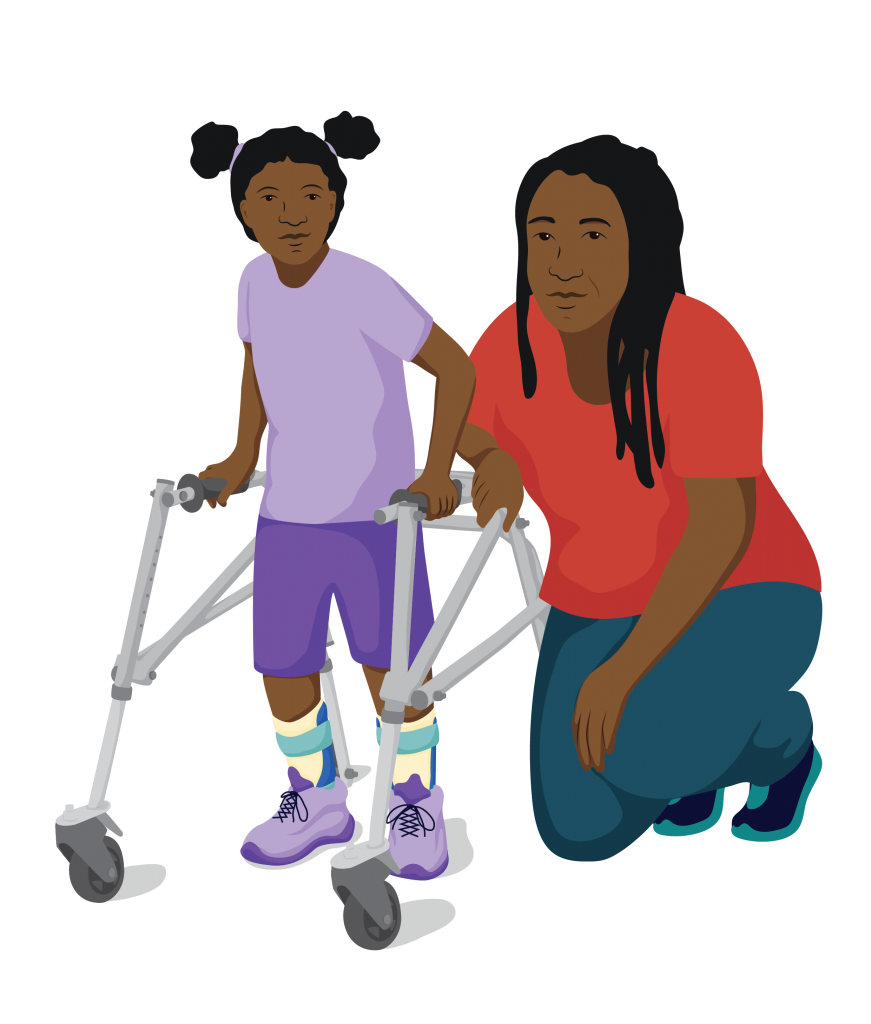
Meet Aleisha
Aleisha has cerebral palsy and finds it hard to coordinate and control her movements. She uses a posterior walker to help her move around.
Aleisha does as much of her own self care as she can with assistance from her mother when she needs it.

She sits on a stool to get dressed, and has another stool close to her with her clothes in easy reach. She also uses clothes that are easy to pull on and off.
You have completed Lesson one!
If you have any questions or comments, post them on the discussion forum.

